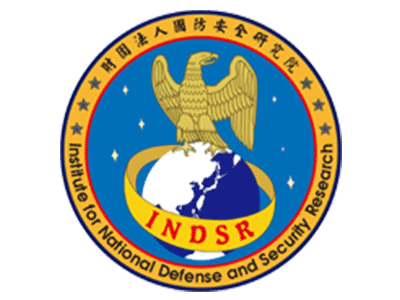An Analysis of PLAN Fujian Aircraft Carrier Overall Operational Capabilities
2023.02.10
Views
1072
PDF link:
1.News Highlights
On June 17, 2022, China’s CCTV news reported the naming ceremony for the Chinese Navy’s third aircraft carrier, held at 11 a.m. at the Jiangnan Shipyard of the China Shipbuilding Group, with the presence of Xu Qiliang, Vice Chairman of the Central Military Commission, Dong Jun, Commander of the PLA Navy, and Yuan Zhihua, the Navy Political Commissar. Claimed to be “China’s first completely self-designed aircraft carrier,” the newly built carrier was given the name “Fujian” and the pennant number “18.”[1] With a displacement of more than 80,000 tons, Fujian is equipped with an electromagnetic aircraft launch system (EMALS) and an integrated power system (IPS), which signify that China’s military shipbuilding technology is now on par with advanced Western countries. CCTV news reported that Fujian will perform berthing and sea trials as planned after its launch. According to the estimation of some US media, Fujian is expected to join the PLA naval fleet operations in 2024, and the carrier-operated aircraft and early warning aircraft under development will be deployed at that time, epitomizing China’s entrance to a new era of carrier combat capability.”
2.Security Implications
2-1. Electromagnetic catapults enhance Fujian’s overall combat capability
The PLA Navy’s previous carriers, Liaoning and Shandong, both employed a ski-jump deck that provides extra lift to the launching aircraft through the upward raised deck. However, due to physical constraints, the aircraft’s takeoff weight is limited. The design hinders the deployment of heavy or slower aircraft and indirectly restricts the fuel and ammunition payloads, thus affecting range and striking power considerably. To get beyond the inherent limitations of ski-jump decks, the PLA Navy decided to develop an EMALS and deploy it on the newly-built Fujian aircraft carrier. This EMALS has the following advantages over the traditional steam catapult used by the US Navy: the smooth acceleration of linear motors, instead of steam pistons, reduces damage to the aircraft. The system has a simpler mechanism that takes up less space, which reduces operating and maintenance costs. The operations can be quickly prepared for high readiness, and the electrical power output can be adjusted for different catapult speeds required by different aircraft ranging from large AWACS to small drones.[2] Thanks to the EMALS, Fujian has the better operational capability and combat flexibility than the previous two carriers.
2-2. IPS gives Fujian better adaptability and survivability
The Fujian is powered by an integrated power system (IPS), also known as integrated full-electric propulsion (IFEP), the latest propulsion system commonly seen in the navies of advanced countries.[3] For instance, the Zumwalt class (DDG-1000) missile destroyers of the US Navy and the Queen Elizabeth class carriers of the British Navy use IPS for propulsion. With IPS, Fujian integrates the power for propulsion and other operations in one. The two are interchangeable when necessary to solve the power shortage problem in the future deployment of energy weapons or simultaneous operations of high-power equipment. The IPS allows the elimination of reduction gears to reduce the mechanical vibration and radiated noise generated by the hull, which effectively improves Fujian’s stealthiness and the chance of being detected by enemy sensors. Since the power comes from a decentralized structure, the critical shipboard systems can be quickly restored when Fujian sustains battle damage.[4] Therefore, with the IPS, Fujian has a better battlefield survival chance and damage control capability than the previous Liaoning and Shandong carriers.
3.Trend Observation
3-1. Fujian is yet to pose a threat to the US Navy in the short term
Due to the conventional propulsion system, the range and endurance of the Fujian are far less than that of the US Navy’s nuclear-powered carriers. Even so, Fujian’s massive displacement and deck area still allow for more fuel, ammunition, supplies, and aircraft than Liaoning and Shandong, and its range of operations and combat area could be extended considerably. In the future, as the PLA Navy deploys a new generation of powerful warplanes, such as fighters/attackers, AWACS, electric warfare aircraft, anti-submarine aircraft, and helicopters, to Fujian, combined with the 055-class missile destroyers and the 093-class nuclear-powered attack submarines, it will be able to form a strike group similar to the US Navy’s to carry out anti-submarine, anti-ship, and ground attack missions in the vast waters outside the “second island chain.” The capability is one of the most important indicators for the PLA Navy to become a blue-water force and is a necessary condition for its effective “far-sea defense.” However, due to the lack of carrier operation experience in the PLA Navy, its concept of warfare, tactics, and training are not yet well developed; therefore, it is not yet a power to challenge the US Navy in the near future.
3-2. The PLA is upgrading its Navy through carrier constructions
The launch of the Fujian marks a further improvement of the PLA Navy’s combat capability and shows that its hardware construction is reaching the standard of advanced Western countries. For example, only US carriers have currently equipped EMALS similar to the Chinese one. Since the system works on the same principle as the Electromagnetic Rail Gun (ERG), its electrical energy storage and “pulse-power technology” could assist the PLA Navy in developing energy weapons. In addition, the IPS adopted by Fujian is expected to be applied to other large surface ships such as destroyers and amphibious ships in the future. Although aircraft carriers are the most important combat asset of the navies that operate them, they still have to rely on aircraft and other ships to provide protection due to their limited self-defense capability. Therefore, as the PLA Navy builds up its carrier force, in addition to strengthening the carriers’ own fighting capabilities, the escorting aircraft and ships must also perform adequately to ensure the carrier’s safety in high-intensity modern naval warfare. That means the construction of Chinese aircraft carriers is expected to boost its navy’s overall combat capability, and the effects are far more than just building new carriers. In other words, China’s aircraft carrier program can accelerate the implementation of its goals to improve the quality of its armed forces, and the construction of its carriers will play a leading role in its military modernization.
(Originally published in the 57th “National Defense and Security Biweekly”, July 1, 2022, by the Institute for National Defense and Security Research.)
(The contents and views in the assessments are the personal opinions of the author, and do not represent the position of the Institute for National Defense and Security Research.)
[1] Lin Zeh-Hong and Liao Shi-Feng, “Fujian Launched as China Enters the Era of Three Aircraft Carriers,” UDN News, 18 June 2022, https://udn.com/news/story/7331/6397020.
[2] Azeem Singh Kahlon, Taavishe Gupta, Pooja Dahiya, Sudhir Kumar Chaturvedi, “A Brief Review on Electromagnetic Aircraft Launch System,” International Journal of Mechanical And Production Engineering, Volume 5, Issue 6, Jun 2017, p. 63.
[3] Raymond McConoly, “Type 003 to be the Most Powerful Aircraft Carrier of China,” Naval Post, October 31, 2021, https://navalpost.com/type-003-most-powerful-aircraft-carrier-of-china/.
[4] Ronald O’Rourke, Electric-Drive Propulsion for U.S. Navy Ships: Background and Issues for Congress(Washington, D.C.: Congressional Research Service, 31 July 2000), pp. CRS-19 - CRS-20.


